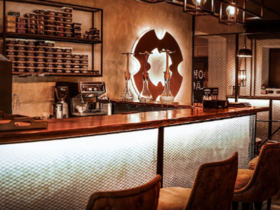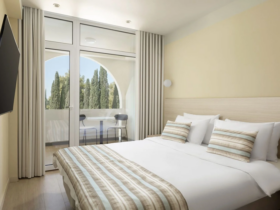The technology of cladding external walls with tiles, depending on the materials used, can be divided into two main types. The first is a cladding using thermal insulation materials and the second, if the thermal conductivity of the walls is sufficient without insulation. But in any case, the first step in the path of facing the facade with tiles is the preparation of the base, on the quality of which the strength and quality of the final result depends.
At the stage of preparing the base, it is first necessary to determine the local irregularities of the base, for this they use a three -meter rail, which is applied to the surface of the wall and the depths are determined by gaps under it, as well as the large tubercles are outlined. The non-deep depressions detected on the surface are corrected with the help of aligning construction composition for walls, deep hollows of more than 15 mm are corrected using a steel mesh, which is attached at the site of the cavity to the wall with dowels, after which it is covered with a layer of cement-sand mortar. Bulge and hillocks should be cut down or it is possible to eliminate with the help of leveling compounds. For better adhesion of tiles with a surface on the wall, notches are made from each other at a distance of 2-3 cm. At the final stage of preparing the base from the surface of the wall, dust is removed, using the acid with diluted water.
If the task is to insulate the room, then the heat -insulating plates must be glued and reinforce them with tiles directly facing the facade.
As a heater when facing the outer walls with tiles, as a rule, mineral wool or slabs from facade polystyrene foam are used. A special glue is used as glue to glue the corresponding insulation. It is important to remember that it is necessary to achieve the appropriate quality of gluing work at a temperature of at least +5 and not higher than +250C, regardless of the type of glue used. The gluing of thermal insulation plates is carried out horizontal rows, below upwards by shifting vertical joints, overlapping seams are unacceptable. The joints of the plates should be without solution and connect tightly to each other.
Before starting the main reinforcement, along the entire plane of the insulation at all angles of the openings and holes, the corners with the use of the grid should be thrown. It is also recommended to cut strips of reinforcing mesh and put them diagonally at the corners. The reinforcing masses should be applied to the surface of the insulation with a layer of not more than 3-4 mm along the width of the fiberglass, which is laid with vertical stripes in the overlap of 10cm each other. The reinforcing mesh should be located in the upper third of the reinforcing layer. After the glass stoppes is laid by the “wet on wet” method, plunged to a full coating. Tile gluing work after applying the reinforcing layer is allowed to start no earlier than one week.
The gluing of the tiles begin by applying to the marking surface, which is made using a breakdown cord depending on the selected tile format. The starting points for applying marking are windows and doors, to which you must be attached. Laying flat facing tiles must be performed from top to bottom, while you need to start from the corner. The solution for laying tiles is prepared due to the calculation of the need to work within 30 minutes. The technology of gluing tiles to the surface is simple and consists in the following:
1.It is necessary to clean the surface of the tiles of dust and sand, if necessary;
2.A glue solution is applied to the surface of the wall with a smooth spatula, and then again applied with the help of a corrugated spatula and is “combed” in a horizontal direction. Glue should apply such an amount that can be immediately covered with tiles;
3.If the back side of the tiles with rough relief, then the glue should also apply to its surface;
4.We lay the tiles, which must be tightly pressed into the solution and slightly shifted to the side, but the time for adjusting the tiles should be no more than 15 minutes;
5.After gluing the first tile on its sides, excess glue, which was squeezed out with a flat brush;
6.Remove the possible pollution of the front side of the tile.
Facing work is recommended to be carried out from top to bottom, which will avoid pollution and damage to the already glued tile. The width of the seam between adjacent tiles should be withstand 10mm.
The final stage in the facade cladding is the seaming of the seams, which can be started no earlier than one week after gluing the tiles and at an outdoor temperature within +5- +200s. Grout is carried out using special grouting materials with different colors and a special soft grater. When smoothing the joints, they avoid strong grater pressure so that the grouting material is not squeezed out of the seam. At the end of the work, the seams are treated with a soft brush.
When facing the outer walls with tiles without the use of insulation, it is necessary first of all to level the surface by plastering it. The strongly structured plaster surface must be polished and cleaned. For some time before laying the tiles, the surface of the wall must be primed to strengthen the plaster. Then proceed to the tile sticker according to the above recommendations.
It is also important to note that the amount of necessary tiles is calculated based on the area of the facing surface, but at the same time the amount of the purchased tiles is increased by 10-15 % due.












Оставить коммент.